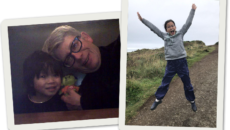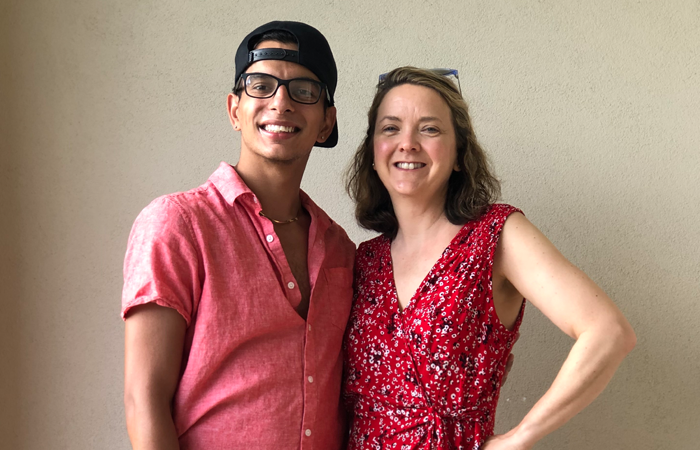For many adoptive parents, a major concern is whether grandma and grandpa will accept and love their new child. Some parents worry that a child’s race may determine whether she is welcomed into the fold.
Others wonder if grandparents will, in subtle ways, favor their biologic grandchildren, or inadvertently make insensitive remarks about a child’s origins. In a few families, the birth parents’ educational background — or lack of one — may also be an issue.
When grandparents warm to the new member of the family — as most of them quickly do — adoptive parents breathe a sigh of relief. Seldom do they ask themselves if the adoptee will feel as connected to her aunts and uncles, or her nana and poppy, as they will feel to her. In truth, while most adoptees feel deeply attached to the parents who adopt them, they don’t always feel a profound connection — or even a sense of belonging — to the larger family that we call a clan.
Tribal Instincts
The word clan is loaded with meanings. It says tribe, history, family tree. It says: These are my people, with whom I have a connection stretching back thousands of years.
An adoptee may feel loved by her extended family, and she may feel love toward them. But she still may not feel any more like a member of the clan than a beloved daughter-in-law.
Some adoptees are given names with family significance, like Boomer Fogvoice IV. Such names imply a genetic connection going back several generations. They can leave an adoptee feeling like an impostor — even when the parents’ intent is to make the child feel included.
Holiday traditions honoring family origins — such as the German custom of leaving shoes outside the door to be filled with gifts by St. Nicholas — can leave adoptees feeling that they are only playing a role in somebody else’s family.
Even in the most welcoming of extended families, adoptees may feel a distance that they don’t feel in their nuclear family. A child may feel that, while his adoptive parents chose to make him part of their family, his extended family had no say.
For some adoptees, however, the difference between feeling loved and accepted by their extended family and feeling like part of the clan is simply the nature of being adopted. It is the difference between feeling close to someone because of a personal relationship and feeling close to someone because of a shared history.
Generation Gap
Perhaps the best approach parents can take is to acknowledge and accept the realities of adoption: An adoptive family is defined by roles and relationships. A birth family is defined by biology and history. Recognizing and respecting the difference between the two types of families can be extremely affirming to the adopted child.
Adoptees take on the roles of daughters and sons, grandchildren, nieces and nephews, cousins, aunts and uncles. Relationships are formed and nurtured.
These roles and relationships are real (which is why asking about an adoptee’s “real” mother can elicit rage in adoptive parents). Adoptive families are as real as any other families, with the same kind of devotion among the people involved.
None of this changes the fact that each one of us is also shaped by our genetic makeup. We are affected by the experiences of our ancestors. Our place in this world stems from ancestors, many of whom helped shape the world itself.
The history of African Americans has real meaning for an African-American child. African Americans are her people; they are part of her history. What happened to her ancestors shaped her, perhaps in subtle ways, perhaps profoundly.
This fact may be less obvious in the case of the Scotch-Irish child adopted by Scotch-Irish parents, but it is no less true. While the parents and child may share an ethnic identity, they may not have had common ancestors, therefore, they don’t share the same history. How history shapes us is perhaps not as well understood as how DNA shapes us, but many accounts of people who have returned to their ancestral homelands indicate that individual identity is deeply affected by geographic, historic, and ethnic origins. Adoptees say that one of their most urgent questions is, “Who are my people?”
Getting Personal
Because extended family members are not an adoptee’s ancestors, grandparents and aunts and uncles can’t presume to have a feeling of closeness with an adopted child. Relatives must recognize that the adoptive family is only as strong as the relationships that are forged within it. Acceptance and connections are based on personal interaction, not biology or history.
Adoptive parents can help generate connections between their child and their extended family by involving their aunts, uncles, and grandparents in the adoption process. Whether an adoption is motivated by infertility or some other factor, chances are, the family is not going to look the way the extended family always imagined it would. Maybe the grandma envisioned tending a new baby while her daughter rested after childbirth. Maybe granddad saw yet another generation attending his alma mater. Instead, the parents take a flight to Portland, or they adopt a child with developmental disabilities that make college an unlikely prospect at all.
Besides having to adjust their vision of their new family, extended family members may feel their family suddenly changing in ways over which they have no control. They may harbor worries that the adoptive parents are going to be hurt if the adoption doesn’t go as expected.
This is not so different from what adopting parents themselves worry about as they work through their adoption. Sometimes they expect their extended family merely to be supportive. They misinterpret comments or suggestions as criticism and disapproval (“Why Russia? A woman at my office put an ad in the paper and had a baby from the U.S. in no time.”). Often, these comments are merely expressions of concerns that the adoptive parents themselves are thinking about.
Nonetheless, unless the extended family can work through the emotional stress that surfaces at this time, tensions can distance them from the immediate adoptive family. If that happens, it’s even more difficult to develop connections with the newly adopted child.
Once the child has arrived in the family, all family members should be encouraged to spend time with her. Even at the beginning, they should visit often, even if those first visits are short. In between visits, they can send photos, e-mail, and stay in touch. These efforts will help build a foundation for a personal relationship, and hopefully, will lead to more contact in the future.
Geographic distance can hinder relationships between a child and her extended family, and, when parents have also made a commitment to maintain contact with the child’s birth family, juggling all the relationships can be overwhelming for everyone involved. However, parents who understand that no relationship can be taken for granted — not with the birth family nor with the extended family — will find ways constantly to affirm and nurture all of the family relationships for the sake of the child.


